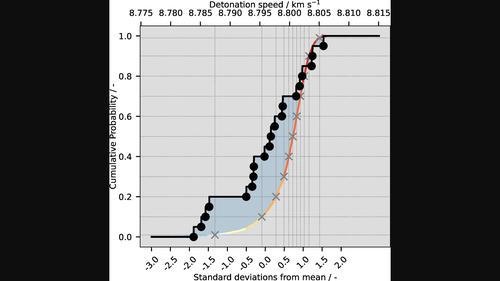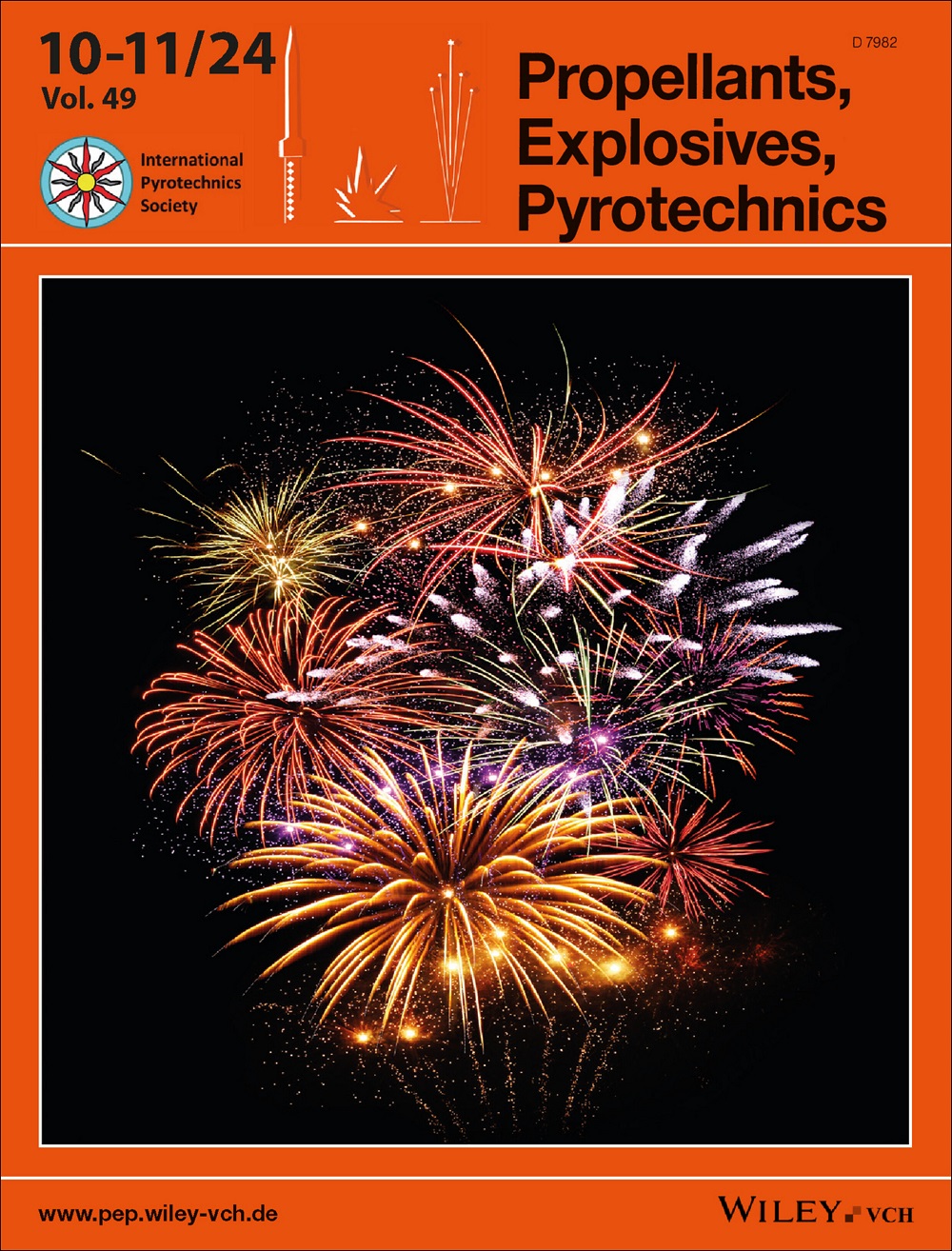高爆炸性 PBX 9501 产品戴维斯状态方程模型的校准和不确定性量化
IF 2
4区 工程技术
Q3 CHEMISTRY, APPLIED
引用次数: 0
摘要
本文研究了用于校准高爆炸药 PBX 9501 爆炸产物的戴维斯状态方程(EOS)的参数的不确定性。该程序试图利用有关该高爆炸药的所有可用信息来确定最佳校准参数集以及这些参数的不确定性。该程序利用了历史实验数据、热化学建模结果以及与钢瓶测试实验数据拟合的最佳等值线函数数据。在贝叶斯校准中将所有这些异构数据源结合在一起,得出后验平均值和协方差。从后验分布中取样并评估 EOS 模型中的一个重要相关量 (QOI),即一英寸速率棒的引爆速度,得出的分布显示出与实验一致的变化。EOS 的不确定性以 11 组模型校准的形式进行了报告,这些校准跨越了该 QOI 的范围。本文章由计算机程序翻译,如有差异,请以英文原文为准。

Calibration and uncertainty quantification for Davis Equation of State models for the High Explosive PBX 9501 products
This paper investigates the uncertainty in the parameters used in the calibration of an Davis Equation Of State (EOS) for the detonation products of the High Explosive PBX 9501. The procedure sought to make use of all available information about this HE to inform the best set of calibration parameters as well as the uncertainty in these parameters. The procedure made use of historical experimental data, the results from thermo-chemical modeling as well as data on the best isentrope function fit to cylinder test experimental data. Combining all these heterogeneous data sources together in a Bayesian calibration, yielded a posterior mean and covariance. Sampling from the posterior distribution and evaluating an important Quantity Of Interest (QOI) in the EOS model, the detonation speed of a one-inch rate stick, produced a distribution which showed variations which were in agreement with experiments. The uncertainty in the EOS was reported as eleven sets of model calibrations which spanned the range of this QOI.
求助全文
通过发布文献求助,成功后即可免费获取论文全文。
去求助
来源期刊

Propellants, Explosives, Pyrotechnics
工程技术-工程:化工
CiteScore
4.20
自引率
16.70%
发文量
235
审稿时长
2.7 months
期刊介绍:
Propellants, Explosives, Pyrotechnics (PEP) is an international, peer-reviewed journal containing Full Papers, Short Communications, critical Reviews, as well as details of forthcoming meetings and book reviews concerned with the research, development and production in relation to propellants, explosives, and pyrotechnics for all applications. Being the official journal of the International Pyrotechnics Society, PEP is a vital medium and the state-of-the-art forum for the exchange of science and technology in energetic materials. PEP is published 12 times a year.
PEP is devoted to advancing the science, technology and engineering elements in the storage and manipulation of chemical energy, specifically in propellants, explosives and pyrotechnics. Articles should provide scientific context, articulate impact, and be generally applicable to the energetic materials and wider scientific community. PEP is not a defense journal and does not feature the weaponization of materials and related systems or include information that would aid in the development or utilization of improvised explosive systems, e.g., synthesis routes to terrorist explosives.
 求助内容:
求助内容: 应助结果提醒方式:
应助结果提醒方式:


